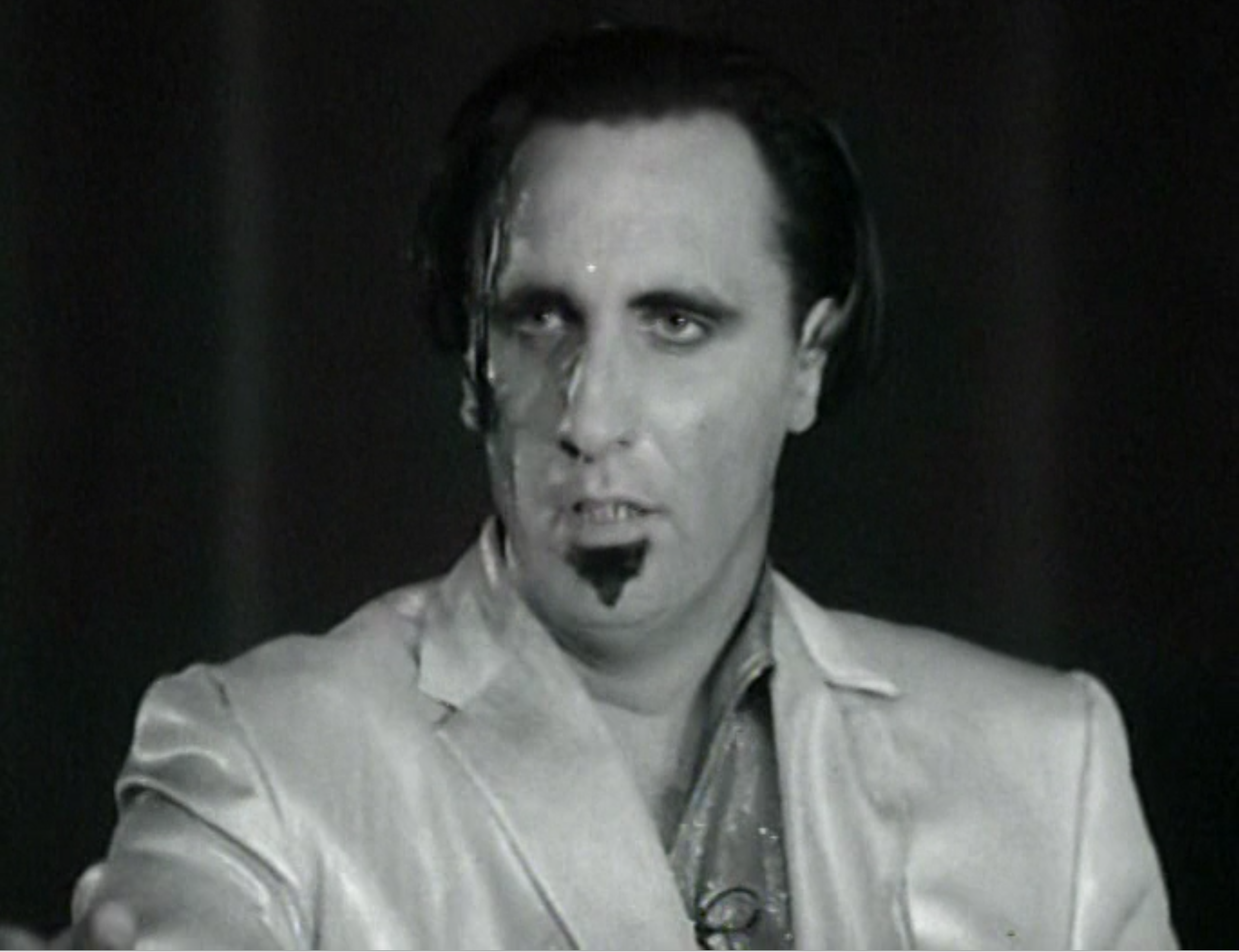
There is a sweet spot when it comes to Bollywood musicals and Aadmi Aur Insaan is nestled right in it. It was made in 1969, during a period when India was producing movies with the perfect blend of kitsch, glam, traditional Indian culture, and an enthusiasm for modern-day progress. Electric guitars and violins meet sitars and tabla. Leopard print pill-box hats meet saris. The film opens with the production company’s old credits immediately followed by the new ones, as seen below.

Aadmi Aur Insaan is full to bursting with content. There is of course the love story, in this case, a love triangle. There is a whole pro-India, pro-progress, pro-industrialization message. Then there is the anti-organized crime, bribes, and corruption message, along with a whole sexual revolution message about the freedom and pitfalls of being a modern woman. If you don’t like the way the narrative is unfolding, just hang on five minutes and it will turn into something else.
With a two and half hour running time Aadmi Aur Insaan manages to not only reference these many subjects but actually address them. It makes no bones about being nationalist, socialist, and progressive, with a hint of nostalgia for the old ways but certainly not the old British ways. There is also a homoerotic subtext which I am sure everyone involved would deny but when you have a man holding another man horizontally like a bride, while an all-male chorus circles around them singing “My heart wants! Oh my dear friend my heart wants!” It’s hard to miss.

Even the core love triangle is far more about the two men involved than the woman. Manish and JK are the best of friends. They are so close they can’t seem to keep their hands off each other. They spend the first half of the film embracing, looking longingly into each other eyes, and squeezing each other’s muscles.

It’s all meant to set up the triangle so that their being turned against each other is more tragic. The love story is entertaining but it is the other themes and messages that really enrich the film.
The first of the two men, JK is an industrialist and acts like an older brother and guide to his friend Manish who is an engineer. Together they are building a damn. This pretense allows for the film to insert a grand musical number about the burgeoning country of India and how through hard work, and modern technology the nation will rise. We see both men and women singing and dancing while they mine and process clay together. It looks more like a Russian propaganda film than Bollywood.

Once big business and industry are on the stage it opens the door to lots of preaching about corruption. A very curious character named Johnny Walker is Manishe’s driver, butler, assistant, servant guy. He is a throwback to the old days and the old ways. He is a comedic character but mostly we are meant to laugh at his bumbling yet cunning ways. It’s a depiction of the colonized subjugate who has learned to game the system but by gaming, it does not challenge it. In fact, Johnny has a nostalgia for the patronage and bribery of the old hierarchy. His Master Manish is far too pure to tolerate such attitudes, but the comical Mr. Walker manages to get into plenty of trouble on the sly. One of the big musical numbers in the film is when Johnny sings a satirical song about how India would crumble without bribes.
Even though Aadmi Aur Insaan is a love triangle there are two leading ladies in opposition to the two leading men. The first is Meena, the good girl, and one end of the triangle. The other is Rita, who is not in the triangle but provides a catalyst for chaos as the classic femme fatale. Knowing what kind of movie I was watching I kept a tally of costume changes for both women to see who would win.
Rita had 18 costume changes. There is a sampling provided below.

Meena had 27 changes because she is the real star. However, Rita deserves bonus points for style.

Meena is a goody two shoes and really just functions as the prize for which the men compete. It’s Rita who is the interesting one. As a true femme fatale, her sincerity is always hard to gauge. She flirts with everyone, and you never quite know what she is after. She leads just about all the male characters closer and closer to disaster. She can seem cold and calculating but she is passionate too. Meena may be the star but Rita gets more musical numbers in which to wiggle and coo. Below we see Meena feeding the poor on the right and Rita doing what she does best on the left.

The contrast between the two is not limited to naughty and nice but to traditional and modern as well. The film displays an ambivalence toward Rita’s liberated ways. Her role in the other character’s lives is ever-changing. She is so driven by her need for attention and affection she is constantly reinventing herself to fit other people’s desires. Her sexuality is powerful and enables her to manipulate situations but only if her target desires her. She is complex and we are never sure what her ultimate fate will be.
Our two male protagonists are like star-crossed lovers moving inexorably toward their destiny. Their actions and passions are mythological in scale. Near the end of the film when everything is going wrong and the two men can not stand the sight of each other, they run into each other in a hallway. They have a bitter confrontation, JK standing in front of a photo of Gandhi and Manish in front of Nehru. Gandhi, a spiritual guide concerned with the deeper truths, and Nehru, his counterpart, concerned with the earthly matters of running a country. The best of friends who did not always see eye to eye.

Manish is the good one, the sincere one. JK is generous and kind on the surface but he is corrupt and doesn’t tolerate anyone who gets in his way. The details of how they become enemies and what results compose a complicated but standard soap opera of coincidences and misunderstandings.

The second half of the film looks and feels like a low-budget James Bond film with Manish as Bond and JK as the supervillain. The assortment of messages takes a back stage to tepid action sequences but it all works out in the end. If you’re worried about spoilers all Bollywood musicals work out in the end.
Aadmi Aur Insaan is a study in contrasts, Meena vs Rita, Manish vs JK, the workers vs the bosses, the new world vs the old. The film was directed by Yash Chopra and produced by his brother B.R. Chopra. Perhaps their collaboration served as a point of inspiration for Manish and JK. The music was composed by Ravi Sharma and for me, it is the perfect blend of traditional Indian music and cheesy pop. These films are so generous in what they offer. The music, the costumes, the themes and politics, and the overwrought melodrama spill out in a cornucopia of entertainment.

If you enjoyed this article click here for more
www.filmofileshideout.com/archives/bollywoods-naag-panchami-is-a-dazzling-explosion-of-color



